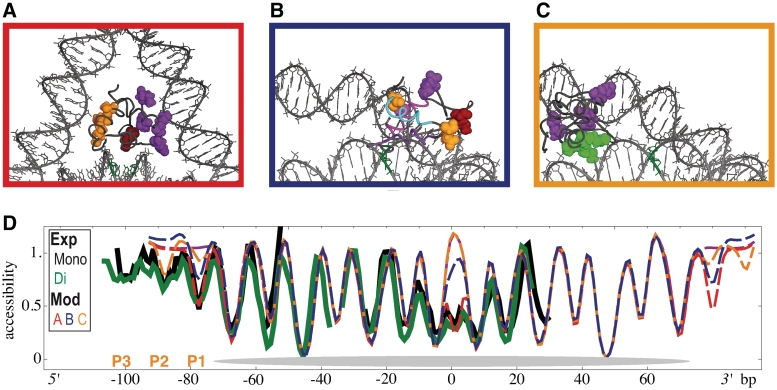Figure 5.
Comparison of the experimentally observed protection in the presence of gH1 with relative accessibilities calculated from three different structural models for the location of the globular domain: (A) Three-contact nucleosome configuration by Fan et al. (24). The viewing direction is the superhelical axis. See ‘Materials and Methods’ section for details. (B) Two-contact nucleosome configuration proposed by Zhou et al. (25). Contact is established with core DNA at 1–4 bp from the dyad, and with one DNA linker (the other linker is not shown). The viewing direction is the superhelical axis. (C) Two-contact nucleosome configuration by Brown et al. (26). Contact is established about 5 bp away from the dyad, and with one linker DNA. (D) Experimentally observed protection: thick solid lines: black (mononucleosome), green (dinucleosome). Structure-derived accessibilities: dashed lines: red (three-contact, A), blue [two-contact by Zhou et al. (25), B] and orange [two-contact by Brown et al. (26), C], and based on a pure mononucleosome without H1 (magenta) [data already published in (23)]. The predictions differ in the protection at the dyad where the two-contact models show no or very weak protection, and at the entry/exit linkers. The measured relative accessibility for a gH1-bound mononucleosome is shown in black, and that of a gH1-bound dinucleosome is shown in green.

